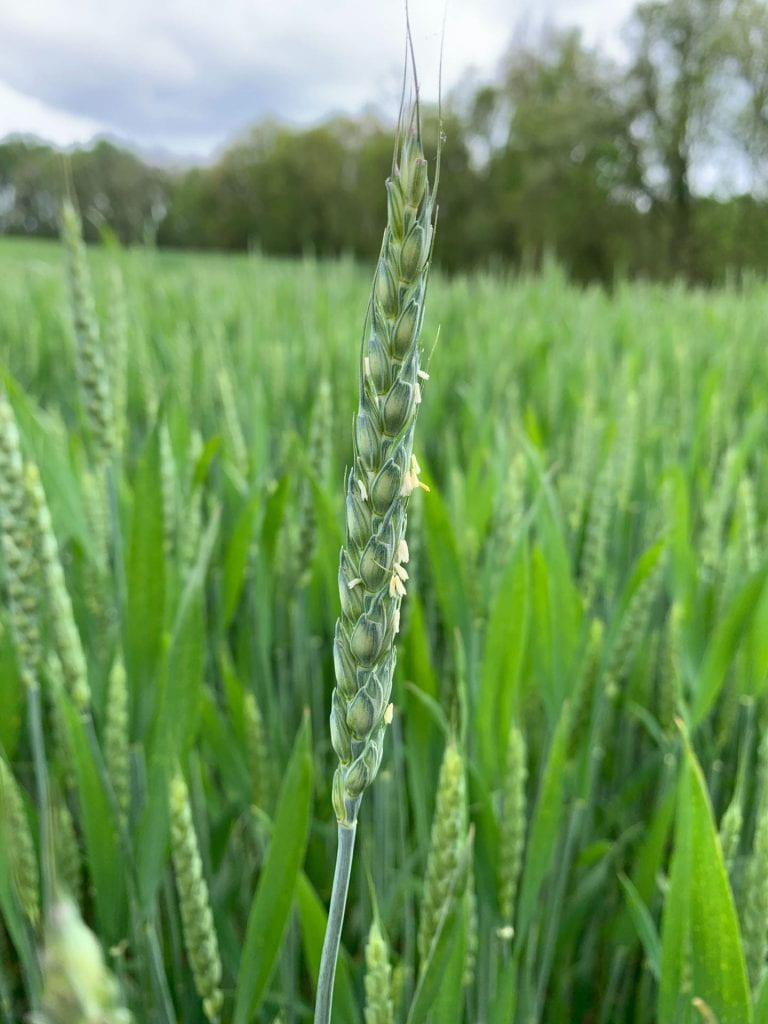Andrew Kness, Agriculture Agent
University of Maryland Extension, Harford County
As wheat approaches flowering, here is a final list of reminders/tips to make the most of your fungicide applications that are targeted to manage Fusarium head blight (head scab):
- Use an effective fungicide. These include: metconazole (Caramba®), prothioconazole + tebuconazole (Prosaro®), prothioconazole (Proline®), and adepidyn (Miravis Ace®).
- Apply an effective fungicide at the correct time. The most effective application window is from flowering (anthesis; Feekes 10.5.1) + about 5-6 days after. Late applications (4-6 days after anthesis) are better than early heading/head emergence (10.3) applications at reducing DON content in the grain.
- Apply fungicides using the correct equipment. Ground applications should be made with 80-degree flat fan nozzles angled down from horizontal. For ground applications made at speeds over 6 mph, use a single nozzle angled forward, 30 degrees down from horizontal. For ground applications less than 6 mph, better coverage is achieved with dual forward and rearward facing nozzles, angled 30-45 degrees down from horizontal.
- Sprayer should be operated to achieve droplet sizes of 300-350 microns.
- Use 10-20 gallons of water per acre and keep the spray boom 8-10 inches above the crop.
- For aerial applications: Use 4-5 gallons of water per acre. Fine to medium sized droplets (300-350 microns). Small aircraft should operate 8-10 feet above the crop; large aircraft 10-12 feet. Nozzles should be mounted to cover 65% of the aircraft’s wingspan and mounted as low as possible.

